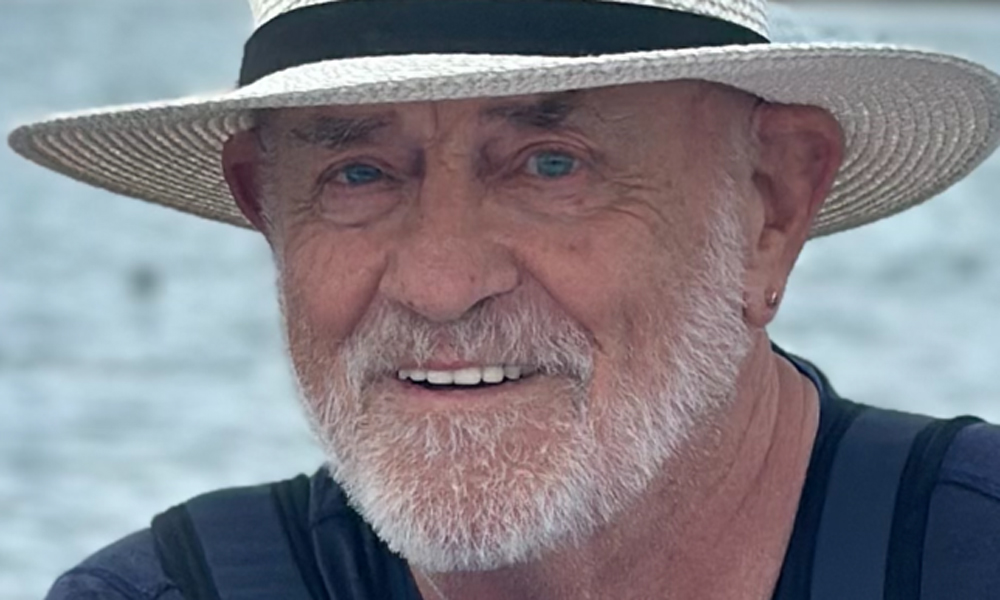What made you decide to become a deck apprentice at the age of 16?
Nothing as romantic as a love of the sea, I’m afraid. In England, we had a school visit by a recruiting team from the British India Steam Navigation Company. They showed a film featuring suntanned young lads dressed in white uniforms gazing over a ship’s rail at tropical islands, and I was hooked. Not long after that, I joined a ship in Grimsby in November, where the relationship to a tropical island was not immediately obvious.
You must have visited lots of interesting places – tell us about that.
There were many interesting places, all in different ways, but perhaps the most interesting to me was transiting the Panama Canal. The sheer scale of the locks lifting up huge ships about 30 metres, then sailing along a jungle lake and through the Culebra Cut before descending the locks to the Pacific, was very exhilarating.
What are your best and worst memories of being a sailor?
I loved the 2400 to 0400 watch, out on the ocean on calm nights when the sky was ablaze with a display of stars that had to be seen to be believed. The worst times were days of bad weather, particularly across the Tasman, when rolling up to 45 degrees meant it was as easy to stand on the bulkhead as the deck.
How did you end up in Australia?
I actually went to New Zealand first. I stayed there for two years and then met a girl in Melbourne on a Saturday, was engaged by Monday, sailed for Auckland on Wednesday, threw my hand in, and was married in Melbourne a month later. I had to tell my parents I’d known her for ages! Annie and I were married for 43 years, until she passed away in 2010.
Why did you come ashore and work as a container packing advisor?
The time spent at sea lost its attraction pretty quickly after getting married. I tried the Australian coast and also worked on a dredger hopper in Melbourne, but they also meant a lot of time away. Containerisation had just started in Australia and I jumped at the chance of a job that at least had a connection with the sea.
How did the formation of Australian Coastal Shipping come about?
An opportunity arose in 2004 when a long-term friend of mine, David James, and I were able to put together the bones of a logistics company to move containers primarily by sea from the east coast to Western Australia.
What sort of goods does ACS handle?
We handle anything and everything that can fit into a container, together with ro-ro, break bulk and project cargo. An interesting item was a large deep-sea submersible we moved from Perth to Cairns by road a couple of years ago. It was going on to explore the deepest ocean off the Philippines.
How has the logistics industry changed over the years?
The basics have remained the same since the major upheaval of the introduction of containers. As far as coastal moves are concerned, a major cost factor has been the introduction of legislation covering the carriage of containers by foreign vessels between Australian ports. This, together with the introduction of a plethora of previously non-existent ancillary imposts on road transport, have hugely increased costs.
Are women playing a larger role now?
If the experience of ACS is anything to go by, they certainly are. We started with two men and are now five to two in favour of women in the day-to-day running of the business. This would seem to also be the case in the companies we communicate with on a daily basis.
ACS recently celebrated its 20th anniversary. What does the future of the company look like?
The future is bright. We have great customers and fantastic staff, and we are small and independent enough that we can adapt quickly to change and seize opportunities as they arise. We will continue to grow and to develop our staff so they can achieve their goals and objectives.
How do you relax outside of work?
Now that I am no longer picked for fly-half, travel has become the main focus. I like to go to Europe and have done a number of bike-and-barge trips where you cycle through the day and join the ship again at night. However, it’s by e-bike these days.
What’s one piece of advice that’s stuck with you?
I like the adage, “Do as you would be done by.” That together with, “If at first you don’t succeed, try, try, try again.” If that fails, I can fall back on one from my seagoing days: “When in danger or in doubt, run in circles, scream and shout.”
This article appeared in the May 2024 edition of DCN Magazine





